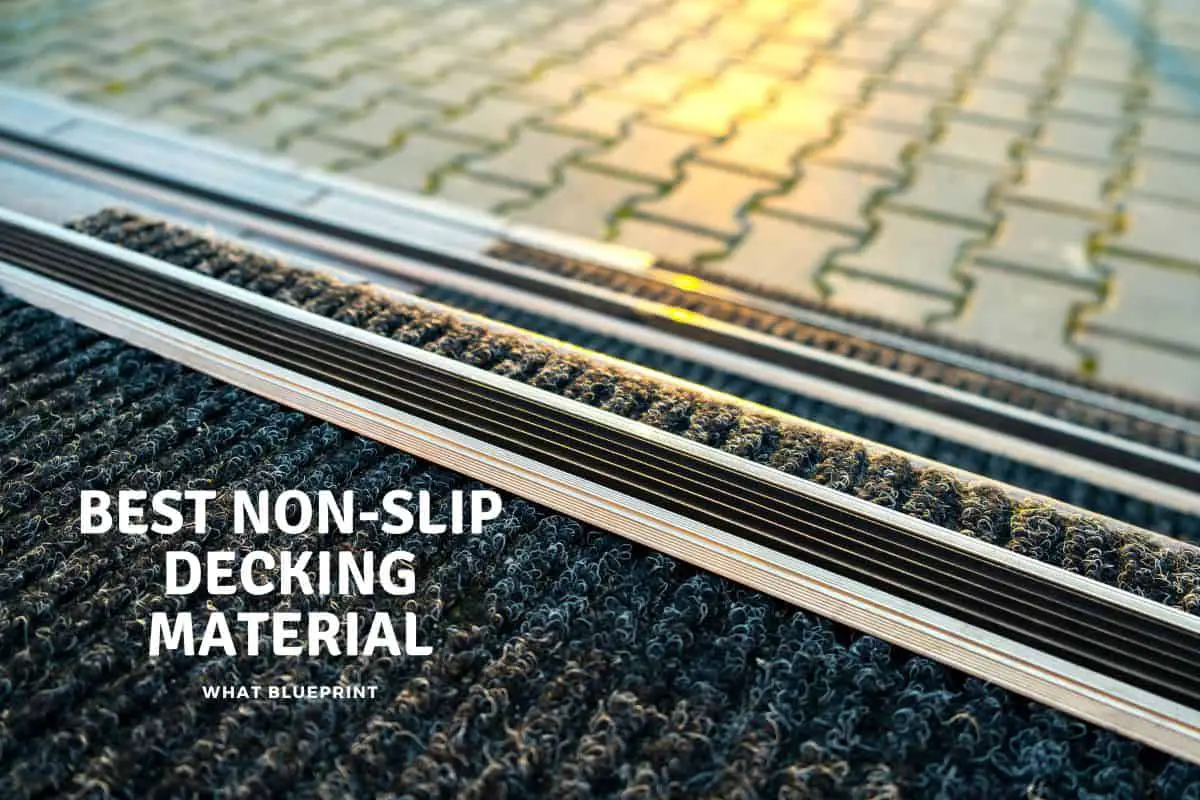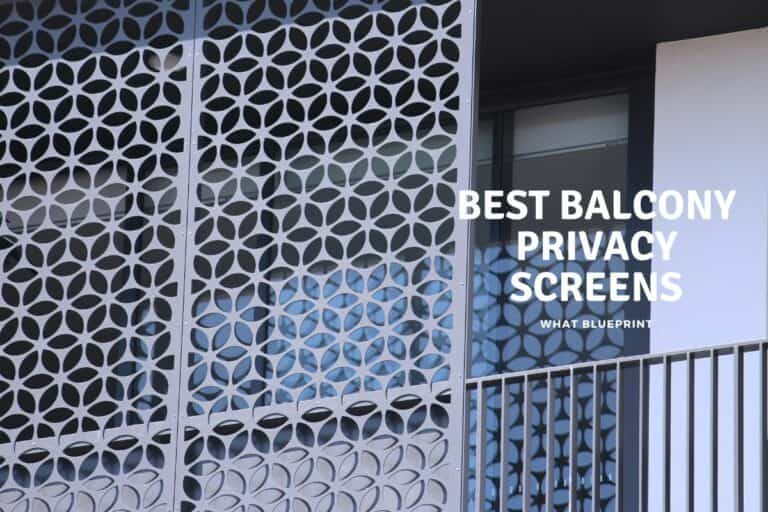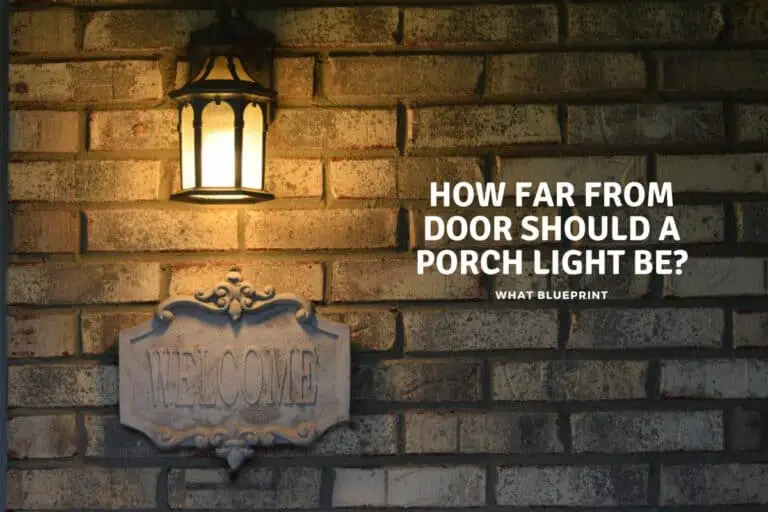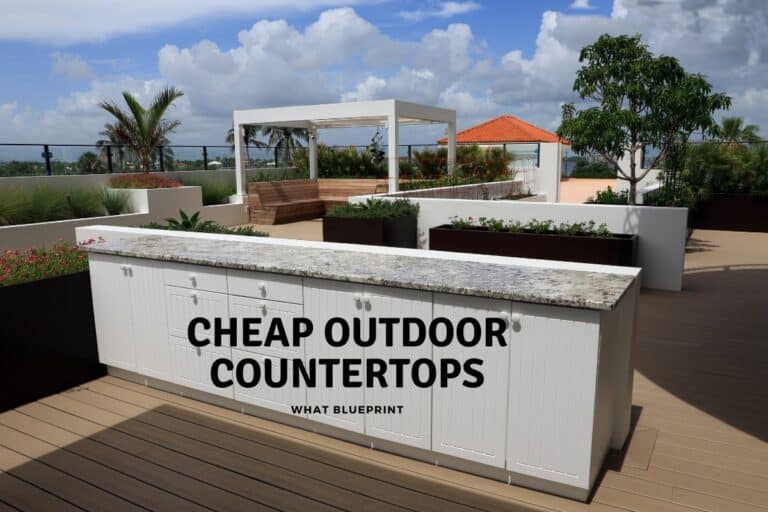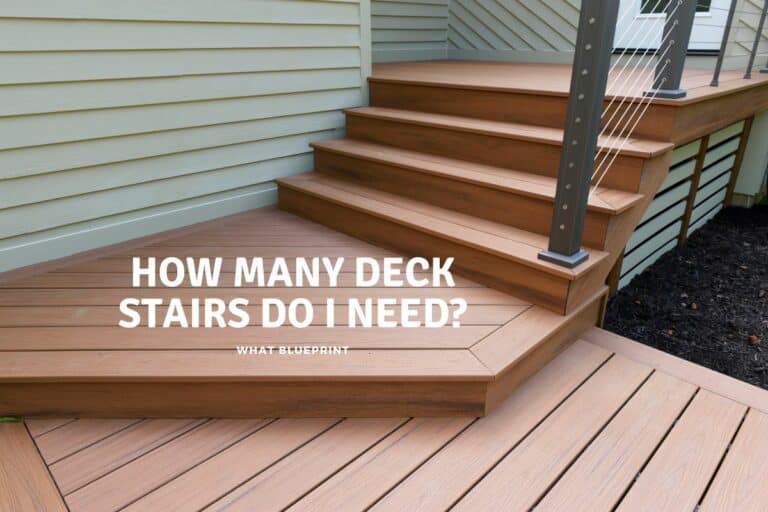Best Non-Slip Decking Material
When choosing a decking material, there are some factors to consider. The price, durability, required maintenance, and if it’s non-slippery. What’s the use of a beautiful deck if it’s as slippery as an ice rink? Luckily, there are many natural and composite non-slip decking materials to choose from, ensuring that slipping accidents are kept to a minimum.
Best Non-Slipping Decking Material:
- Ipe Wood
- Tigerwood
- Cedarwood
- Zuri Premium Decking
- Clubhouse Decking
- Wolf Serenity Decking
- Fiberon Paramount Decking
- TimberTech Azek Vintage Decking
- DuxxBak Decking
- MoistureShield Decking
- Dekorators Decking
- WearDeck Decking
High-quality wood offers natural slip resistance when used as decking material but will require maintenance to keep it this way. More people opt for composite and plastic (PVC) decking to minimize maintenance requirements while enjoying the wooden deck look. Traction and slip resistance often plays a role in most people’s decision on what decking material to buy.
Best Non-Slip Decking Material
Arguably the most crucial choice you’ll make when designing a deck is what kind of material to use. Different situations call for various decking options, and each choice has its aesthetic appeal, maintenance needs, and other crucial factors to bear in mind while making a decision.
Choosing a non-slip material is an essential part of the process. Let’s examine the best non-slip decking material you can choose to ensure no guest breaks a leg while you entertain them.
Wood Decking
Due to its low cost, wood is the most used decking material type. Wood is popular for homeowners and business owners since it’s aesthetically pleasing and has a natural feel. But it’s the most difficult to maintain when it comes to upkeep.
Wood is one of the least likely outdoor decking materials to cause a slip, but only if properly maintained. High-quality wood, in particular, is naturally non-slip. However, as mold and algae develop, the deck may become slick, and regular maintenance may be required depending on the type of wood you choose.
The worst thing about wood is that it is the most prone to algae and mold damage of all the decking options. If care and attention aren’t provided to the wood, it will become slippery, regardless of its excellent grade.
1. Ipe Wood Decking
Ipe is the hardest and best-known Brazilian hardwood, three and a half times as hard as teak. Its inherent oils prevent rot, decomposition, and pests. Due to its cellular structure, Ipe decking is non-slip, making the wood practical around swimming pools or outdoor decking in regions where it rains often.
Ipe wood is a little more expensive than other woods used for decking, but what you get out of the wood outweighs the price of Ipe:
- Beauty: Ipe wood is a smooth hardwood that resembles mahogany.
- Durability: It is a tough wood that resists fire, rot, mildew, termites, and other pests. Ipe has a lower ratio of expansion to contraction than any other material. With all these advantages, Ipe wood has a longer lifespan than other decking materials and can easily last 50 years without any maintenance.
- Low-Maintenance: Ipe wood decking requires little upkeep. Even though it’s not strictly necessary, you may seal it with a sealer and wash it once a year with a cleaning containing hydrogen peroxide for further protection. The cleaner will eliminate the dirt and mold spores.
- Surface Temperature: Ipe wood has a cool surface and absorbs less heat than its competitors, even in the hottest summers.
2. Tigerwood Decking
One of the most exquisite and premium Brazilian hardwood species, tigerwood is often used for decking as it’s one of the best deck flooring solutions. Tigerwood is a cheaper option than many other decking hardwoods while still providing most of the benefits and qualities of more expensive decking woods.
Tigerwood is well recognized for its distinctive brown and black streaks over reddish-brown to light golden-brown colored wood. It is also referred to by the names Brazilian Koa, Goncalo Alves, and Muiracatiara.
Tigerwood is naturally resistant to fungal growth and decay, making it a great non-slip decking wood. Unlike other decking materials, it does not become slippery or glossy when polished or treated. Here are some other plusses when you decide to install a tigerwood deck:
- Beauty: Tigerwood’s natural wood appearance is superior to that of many other types of wood and is unquestionably a step up from synthetic imitations that attempt to emulate and recreate the appearance of genuine wood.
- Grain Pattern: No other decking wood can provide the spectacular grain patterns found in tigerwood, making it a beautiful choice as a decking material.
- Durability: Tigerwood has a Janka scale rating of 2,160, ensuring that denting and wear won’t affect it, and it’s an extremely durable wood. Even though it is super-hard, it’s relatively easy to work with and doesn’t mess up your tools like teak or Ipe hardwood. Expect a lifespan of 30+ years untreated.
- Low-Maintenance: Periodic cleaning is advised. Staining and curing the wood are optional and are great ways to preserve the wood’s longevity and beauty.
3. Cedarwood Decking
The US’s East and West coastlines both support the growth of cedar, an adaptable and robust domestic hardwood. Even though there are numerous varieties of cedar trees, Eastern and Western Red Cedar are the two most frequently used for their lumber. They are great for patios as well.
There are numerous uses for cedarwood. It is commonly used for outdoor purposes, including outdoor furniture, decking, and siding, since it is naturally resistant to rot, algae, mold, and insects. Cedar has a pleasant aroma, is aesthetically pleasing, and is a popular decking material. Cedar has a high level of slip resistance due to its natural makeup.
- Eastern Red Cedar: Although there may be broad streaks of amber, cream, and brown throughout, this type of cedar is recognized for its pink and red colors. Red cedar is primarily straight grain, but a color swirl may occasionally appear. Eastern red cedar has a Janka hardness rating of 900 and is simple to cut to size.
- Northern White Cedar: White Cedar naturally comes in various light and dark shades, from white to tan to brown. Usually straight in grain, but with tiny knots that evoke knotty pine. It’s a soft wood (320 on the Janka scale), making it simple to work with and cut.
- Durability: Because cedar prefers humid environments, it can resist various challenges. Cedar resists warping, swelling, shrinking, and deterioration even in extreme climatic fluctuations; it is a superb material for decking purposes.
- Life Expectancy: An untreated Cedar deck will last between 10 to 15 years. A cedar deck might endure 25 to 40 years or perhaps longer with regular board replacement, cleaning, sealing, and annual inspections.
PVC Decking
PVC decking is made of polyvinyl chloride, a kind of plastic, and doesn’t contain any organic materials like wood fiber. PVC decking is designed to prevent some of the drawbacks of organic deckings, such as moisture invasion, which results in mold, mildew, and rot, because it contains no organic material.
Due to its lack of slickness when wet, PVC decking consistently receives higher ratings when slip resistance is measured in wet circumstances. It’s a perfect option if you stay in areas where it’s constantly wet.
Best Non-Slip PVC Decking Materials
According to the Canadian Construction Materials Center (CCMM), which tested different non-composite and composite decking brands for their traction and non-slip abilities (requiring a score of more than 0.5 than the required residential rating recommended by the CCMM) – the following PVC decking products scored the highest:
4. Zuri By Royal Building Products
Zuri Premium Decking is made from PVC and features minimal grain repetition to replicate the beauty of the exotic hardwood look aesthetically. These premium decking boards are resistant to stains, scratches, fading, moisture, and, most importantly, slips, offering a high level of traction underfoot.
When wet, Zuri decking appears to be incredibly slippery. However, the nearly flawless smoothness and rubber-like gloss do not affect performance, as indicated by the product’s data guide.
| Zuri Slip Resistance When Dry – 0.82 to 0.86 | Zuri Slip Resistance When Wet – 0.89 to 0.97 |
5. Clubhouse PVC Decking
Clubhouse Decking combines cutting-edge material science, top-notch engineering, and patented performance manufacturing to create a deck that looks beautiful in any weather. The CCMM scored these premium PVC decking boards high concerning traction and slipping improbability.
| Clubhouse PVC Slip Resistance When Dry – 0.97 | Clubhouse PVC Slip Resistance When Wet – 0.86 |
6. Wolf Serenity Decking
Wolf Serenity Decking products are made from High-Density Cellular Technology, which provides excellent moisture repellency and is ideal for use in coastal and rainy regions. Wolf Serenity Decking is made from solid core foamed PVC with a copolymer capped layer, offering high slip resistance.
| Wolf Serenity Decking Slip Resistance When Dry – 0.74 to 0.85 | Wolf Serenity Decking Slip Resistance When Wet – 0.75 to 0.87 |
7. Fiberon Paramount Decking
Fiberon Paramount is a PVC decking product, when tested, scored a very high resistance to slipping. This decking option can be used in or underwater, making them ideal as pool stairs and for use around water environments.
| Fiberon Paramount Decking Slip Resistance When Dry – 0.80 | Fiberon Paramount Decking Slip Resistance When Wet – 0.75 |
8. TimberTech Azek Vintage Decking
TimberTech Azek Vintage PVC decking collection is another product with relatively high traction and non-slipping scores. The Vintage collection features Alloy Armour Technology (AAT) that improves the performance of the boards regarding UV protection, scratch resistance, and increased weather protection.
| TimberTech Azek Vintage Decking Slip Resistance When Dry – 0.74 | TimberTech Azek Vintage Decking Slip Resistance When Wet – 0.61 |
We have a host of articles on Decks design, construction and decoration we have listed four to access below and there are many more on the site.
Composite Decking
Manufacturers mix synthetic and natural elements to create composite decking. Most composite deck boards combine virgin or recycled plastic (HDPE), wood fiber (50%), and chemical additives. Composites behave and feel more like wood.
Uncapped wood composite and capped wood composite are the two main types of composite decking. Due to its exposed wood components, uncapped wood composite is the most prone to mold and mildew. As they are enclosed in a plastic shell, boards made of wood composite with caps provide more protection.
Results indicate that grooves are preferable over woodgrain if you want your non-slip composite decking to have increased slide resistance. When wet, the board’s grooved side performs better than the woodgrain side.
Adding fiber increases plastic’s rigidity, lessens its propensity to flex with temperature changes, and roughens the material’s surface to increase skid resistance. Compared to all-plastic decking, the material is simpler to cut and install. Composites are simpler to maintain than solid wood since they don’t need any finish.
The benefits of composite decking:
- Low-Maintenance: Composites are simpler to maintain than solid wood since they don’t need any finish or seal. Occasional cleaning is all that’s required.
- Algae Resistant: Composite decking is designed to withstand the harmful effects of algae development and is also resistant to rot and weather damage – all factors that will turn your decking into a slippery slope.
- Increased Rigidity: Adding wood fiber to the plastic mix increases the rigidity of the plastic, lessens the plastics propensity to flex with temperature changes, and adds roughness to the surface material that increases skid resistance when compared to 100% plastic decking.
Best Non-Slip Composite Decking Materials
According to the Canadian Construction Materials Center (CCMM), which tested different non-composite and composite decking brands for their traction and non-slip abilities (requiring a score of more than 0.5 as the required residential rating recommended by the CCMM) – the following composite decking products scored the highest:
9. DuxxBak Composite Decking
DuxxBak decking has the lowest moisture absorption rate of any composite product in the decking industry—lower even than cellular PVC. It’s a mineral-based composite decking product that is highly slip-resistant.
| DuxxBak Slip Resistance When Dry – 0.55 | DuxxBak Slip Resistance When Wet – 0.9 |
10. MoistureShield Composite Decking
MoistureShield is a more traditional wood-based composite that streamlines the use of wood fibers to increase durability and non-slip properties required for deck-building. MoistureShield’s capped decking options have less of a smooth sheen than similar products, making it feel less plastic.
| MoistureShield Vantage Uncapped Slip Resistance When Dry – 0.79 | MoistureShield Vantage Uncapped Slip Resistance When Wet – 0.81 |
| MoistureShield Vision Slip Resistance When Dry – 0.83 | MoistureShield Vision Slip Resistance When Wet – 0.77 |
| MoistureShield Elevate Slip Resistance When Dry – 0.77 | MoistureShield Elevate Slip Resistance When Wet – 0.71 |
11. Deckorators Composite Decking
Deckorators Voyage product line is a mineral-based composite decking board with textured embossing providing 34% more traction than other popular brands, making it ideal to use in wet climates, which is a huge safety benefit when non-slippery decking is non-negotiable.
| Deckoraters Voyage Slip Resistance When Dry – 0.74 | Deckorators Voyage Slip Resistance When Wet – 0.69 |
12. WearDeck Composite Decking
WearDeck has an embossed woodgrain surface for great slip resistance and permanent static protection. A lifetime home guarantee and a 25-year business warranty are included with WearDeck. The deep embossing found in WearDeck products makes for a more gripping finish.
| WearDeck Slip-Resistance When Dry – 0.67 | WearDeck Slip Resistance When Wet – 0.69 |
13. Trex Transcend Decking
Trex Transcend decking material is made from 95% post-consumer plastic and reclaimed wood and offers clients a limited 25-year residential warranty on their boards. The Trex Transcend evaluation report indicates a high-quality decking product that’s not as slip-resistant as others on the list yet is still a massively popular decking material.
| Trex Transcend Slip Resistance When Dry – 0.43 to 0.52 | Trex Transcend Slip Resistance When Wet – 0.32 to 0.39 |
Conclusion
Exotic hardwoods are typically slip-resistant due to their natural makeup, and apart from the maintenance aspect, they are your best non-slip decking material.
Composite and plastic decking has come a long way regarding the increase of slip resistance in their products but is typically more expensive than their wooden counterparts.
References
- https://nrc.canada.ca/en/certifications-evaluations-standards/canadian-construction-materials-centre/about-canadian-construction-materials-centre
- https://www.consumerreports.org/decking/best-composite-decking-from-consumer-reports-tests-a6753939440/
- https://www.envirobuild.com/blogs/articles/composite-decking-slip-resistance-rating
- https://www.duxxbakdecking.com/
- https://www.moistureshield.com/
- https://www.wolfhomeproducts.com/deckingandporch/serenitydecking
- https://decksbye3.com/6-ways-pvc-is-better-than-composite-decking/
- https://decksbye3.com/best-composite-decking-brands/slip-resistance-traction/
- https://www.weardeck.com/post/what-is-composite-decking
- https://www.abswood.com/blog/advantages-using-tigerwood-deck-flooring/
- https://www.decks.com/how-to/articles/best-deck-material-options
- https://neotimber.com/decking/slip-resistant-composite-decking/
- https://www.thisoldhouse.com/decking/21017708/all-about-hardwood-decking
- https://www.envirobuild.com/collections/composite-decking
- https://www.weardeck.com/post/weardeck-best-plastic-decking-material
- https://www.timbertech.com/product/azek-vintage-collection/
- https://www.trex.com/products/decking/transcend/
- https://homeguides.sfgate.com/long-wood-last-cedar-deck-98837.html

